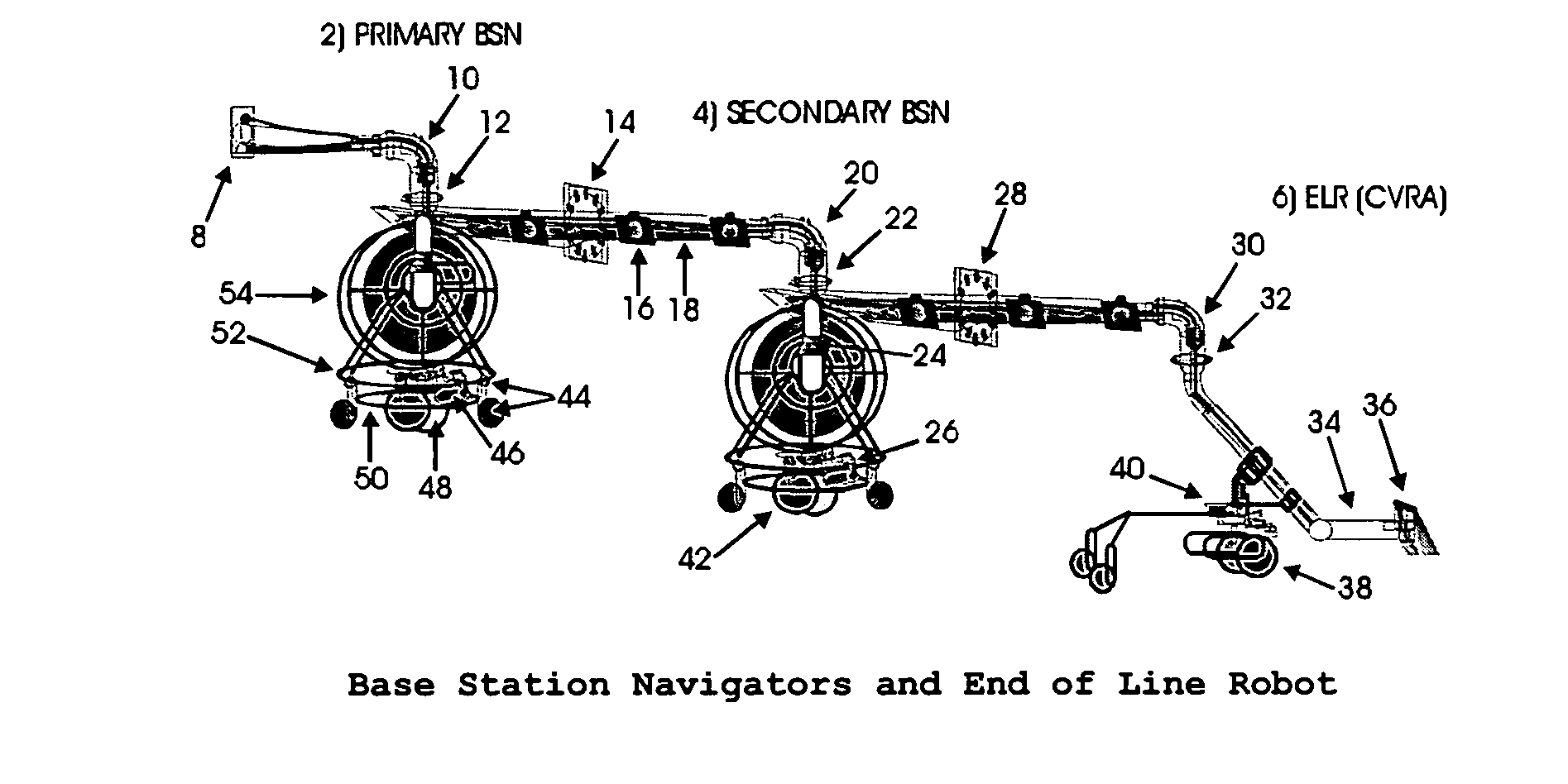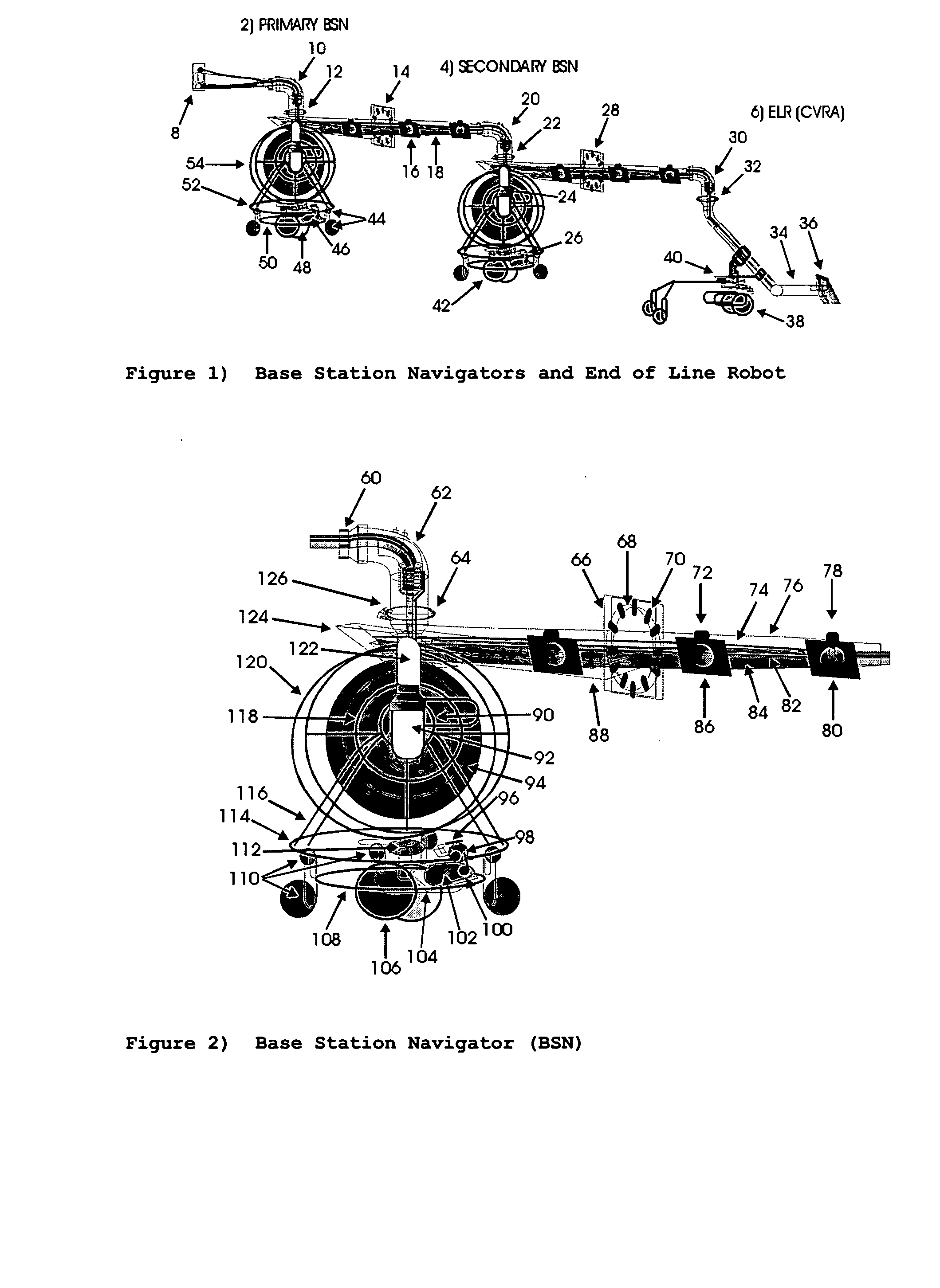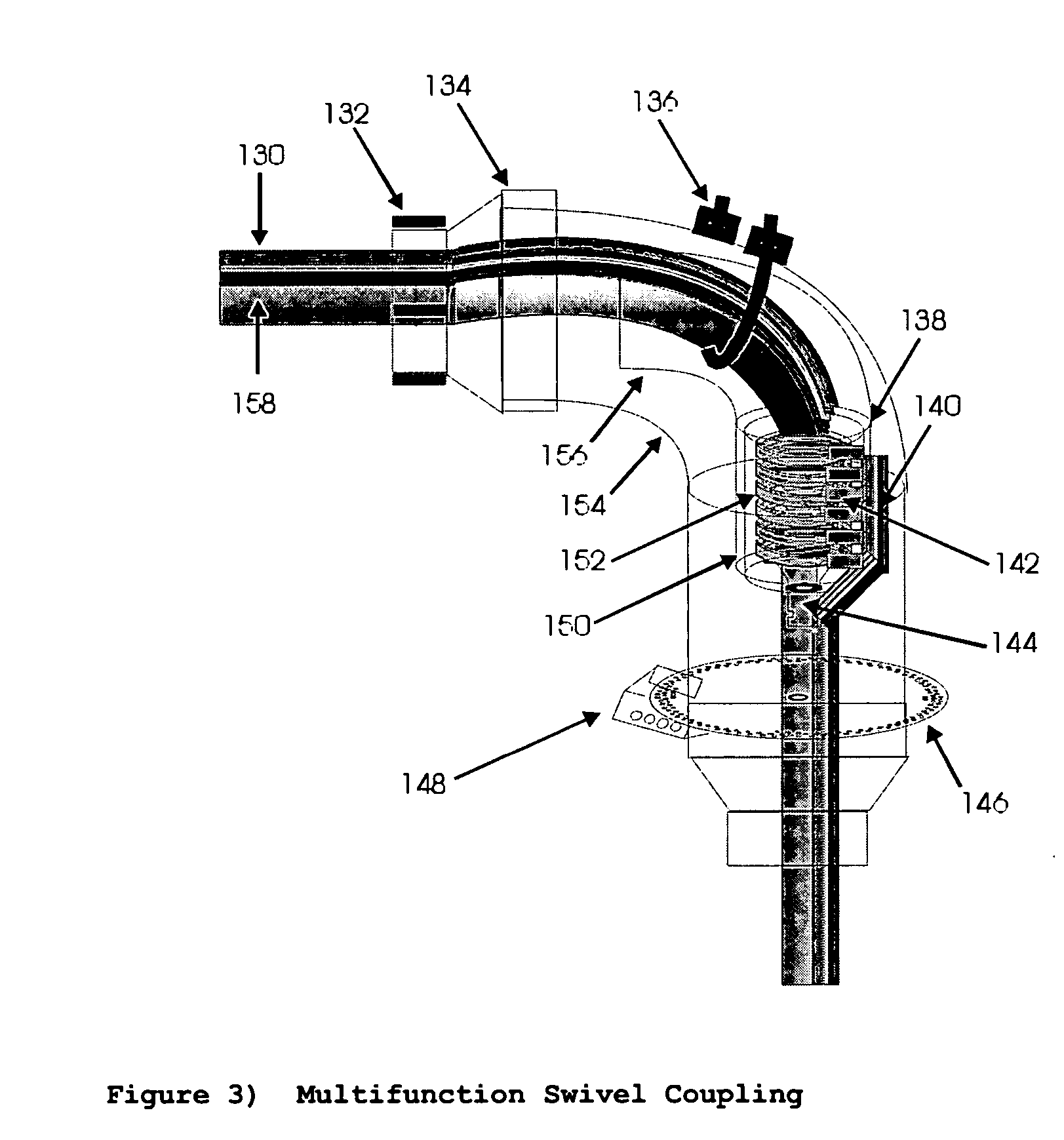Guidance system for a robot
a robot and guidance system technology, applied in the direction of navigation instruments, distance measurement, instruments, etc., to achieve the effect of less expensive construction, operation and maintenan
- Summary
- Abstract
- Description
- Claims
- Application Information
AI Technical Summary
Benefits of technology
Problems solved by technology
Method used
Image
Examples
embodiment 100
[0023] Structure And Relationship of Parts of First Embodiment 100
[0024] The Base Station Navigator (BSN FIG. 2) can be utilised to navigate and map the movement of any ELR moving over a relatively flat 2 dimensional surface-area, where an umbilical cord (consisting of power / communication, hoses etc. (#18FIG. 1; #74, #76, #82, #84—FIG. 2) is implemented. The ELR in this embodiment 100; is not dependent on battery power supply and it has an unlimited supply of fluid to perform its assigned task for much longer periods of time, with less supervision. These are essential features to robots requiring high fluid volumes and unlimited power supply. This cost effective and highly accurate navigation method can be very attractive to any robotic application, even when unlimited power and fluid supply is not the main objective.
[0025] The Base Station navigator was originally designed to navigate and supply fluid solution / chemicals to an ice / snow removing machine. This machine is a year roun...
first embodiment 100
Operation of First Embodiment 100
[0059] Operating a robot with the umbilical cord RODE BSN system is a relatively uncomplicated procedure. First you need to choose a parking location for the primary BSN. Fluid supply and 120V electric power must be permanently plumed into this location. Once this is done and the robot is manoeuvred to it's parking location using either the control board on the robot, or the hand held remote control, you are ready to program the robot to cover a desired working area.
[0060] Programming the Robot
[0061] First move the robot forward to pull out the entire length of the umbilical cord. Check each clamp (marked at 1 foot intervals on the umbilical cord), to insure that the adjusting screw(#80, #86—FIG. 2) on each clamp is set to “interval” not “waypoint” position. Now return the robot to the parking location. Using a lap top computer, with the wireless mouse from the BSN plugged into the mouse port, and running the BSN mapping software, open the mapping ...
embodiment 200
Structure And Relationship of Parts of Second Embodiment 200
[0080] The preferred method for navigating a robot, using the Wireless Base Station Navigator (WBSN) will now be described with reference to FIG. 6 and FIG. 7.
[0081] Another application for the base station navigator would be to take advantage of electronic distance measuring equipment (DME). This electronic measuring would replace the physical way-point / interval clamps and umbilical cord, and greatly simplify the mechanical components, making the BSN a wireless system, referred to as WBSN (Wireless Base Station Navigator) in this embodiment 200. The WBSN would still have to be transported to the base location, would still measure the distance and orbital angle the ELR is in relation to the WBSN. The wireless electronic information transmitted to the WBSN from the ELR, would still control the action of the computer mouse RODE and the optical encoder RODE on the WBSN in the same fashion that the umbilical cord does in emb...
PUM
| Property | Measurement | Unit |
|---|---|---|
| lengths | aaaaa | aaaaa |
| lengths | aaaaa | aaaaa |
| distance | aaaaa | aaaaa |
Abstract
Description
Claims
Application Information
 Login to View More
Login to View More - R&D
- Intellectual Property
- Life Sciences
- Materials
- Tech Scout
- Unparalleled Data Quality
- Higher Quality Content
- 60% Fewer Hallucinations
Browse by: Latest US Patents, China's latest patents, Technical Efficacy Thesaurus, Application Domain, Technology Topic, Popular Technical Reports.
© 2025 PatSnap. All rights reserved.Legal|Privacy policy|Modern Slavery Act Transparency Statement|Sitemap|About US| Contact US: help@patsnap.com



